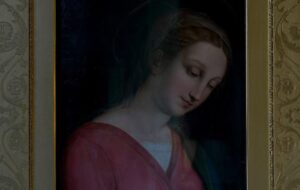The past week has been an art lawyer’s dream, with major news items about cultural heritage destruction, the recovery of stolen art, a lawsuit against a major museum, and the rediscovery of a painting by an Old Master.
Cultural Heritage Destruction and Crimes
Last Tuesday, cultural heritage made the headlines. Ahmad al-Faqi al-Mahdi faced a war crimes charge under Article 25 of the Rome Statute. This is the first time the International Criminal Court (ICC) had attempted to prosecute the “destruction of buildings dedicated to religion and historical monuments” as a war crime. In August, the trial against Al-Mahdi opened before Trial Chamber VIII at the ICC in The Hague, the Netherlands. The Malian national admitted guilt as to the war crime consisting of the destruction of historical and religious monuments in Timbuktu, Mali in 2012. He “exercised joint control over the attacks” by planning, leading and participating in them, supplying pick-axes and in one case a bulldozer.
Al-Mahdi expressed remorse for his involvement in the destruction of 10 mausoleums and religious sites in Timbuktu dating from Mali’s 14th-century golden age as a trading hub and center of Sufi Islam, a branch of the religion seen as idolatrous by some hardline Muslim groups. It was the first international trial focusing on the destruction of historical and religious monuments, and the first ICC case where the defendant admitted guilt. Last Tuesday, al-Mahdi was given 9 years in prison for his crimes. In handing down a 9-year sentence, rather than the maximum of 30 years, the judges stated that they took into account al-Mahdi’s “genuine remorse, deep regret and deep pain” and his calls on other Muslims not to make the same mistakes he had made.
Recovery of Stolen Art

Courtesy of the Van Gogh Museum, Amsterdam
On Friday, another major art announcement was made—two stolen Van Gogh paintings were recovered by Italian military police, the Carabinieri. The paintings were stolen in 2002 from the Van Gogh Museum in Amsterdam when two art thieves used a ladder to climb up to the roof of the museum, and broke into the building. The pair stole two paintings, View of the Sea at Scheveningen and Congregation Leaving the Reformed Church in Nuenen.
Last week, the paintings were recovered in Naples, Italy when authorities found the works after a sting operation to infiltrate an organized crime group, the Camorra. The paintings were stored in one of the houses of an international drug trafficker. According to press release from the Van Gogh Museum, the seascape has a patch of damage on the bottom left corner, but otherwise the paintings are in good condition. It is not known when the works will return to the Netherlands since they will likely be used as evidence in a trial.
Lawsuit against the Metropolitan Museum of Art
On Friday, the Metropolitan Museum of Art was sued over one of its most valuable Picasso works, The Actor. The estate of a German Jewish businessman, Paul Leffmann, asserts that the museum does not have good title to the painting because Leffmann was forced to sell it at a low price after fleeing the Nazis. The estate claims that the sale was made under duress. The law firm for the estate, Herrick Feinstein alleged in the court filing that the museum “did not disclose or should have known that the painting had been owned by a Jewish refugee, Paul Leffmann, who had disposed of the work only because of Nazi and Fascist persecution.” The lawyers said they had negotiated with the Met for several years, while the Met investigated the claim, but they had never been able to reach a settlement. The museum asserts the Leffmanns had made no claim on the painting after the war, when they did try to reclaim property they had been forced to sell.
Rediscovery of a Raphael
 And finally, on Sunday, an interesting attribution matter was announced in the news. A painting likely to be the work of Raphael was ‘rediscovered’ in the Haddo House, in Scotland. The painting of Madonna was obscured by darkened varnish and was misattributed to a minor hand. In 1899, it was valued as a copy for just about $25 dollars. If it is truly a Raphael, it would be worth about $25 million today.
And finally, on Sunday, an interesting attribution matter was announced in the news. A painting likely to be the work of Raphael was ‘rediscovered’ in the Haddo House, in Scotland. The painting of Madonna was obscured by darkened varnish and was misattributed to a minor hand. In 1899, it was valued as a copy for just about $25 dollars. If it is truly a Raphael, it would be worth about $25 million today.
Famous art historian Bendor Grosvenor was at the Haddo House to view other paintings for a BBC television series when he was struck by the Raphael tucked away in the corner. He discovered that the painting was bought as a Raphael in the early 19th century and exhibited as such in 1841. Afterwards, it was downgraded to “after Raphael”, and eventually attributed to a minor Renaissance artist, Innocenzo Francucci da Imola.
The story of this Raphael rediscovery will be featured on 5 October in a new BBC4 series, Britain’s Lost Masterpieces, co-presented by Grosvenor.